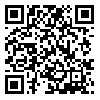Volume 14, Issue 6 (November-December 2015)
Payesh 2015, 14(6): 647-665 |
Back to browse issues page
Download citation:
BibTeX | RIS | EndNote | Medlars | ProCite | Reference Manager | RefWorks
Send citation to:



BibTeX | RIS | EndNote | Medlars | ProCite | Reference Manager | RefWorks
Send citation to:
Jila Sadighi, Ali Hosseini, Kazem Mohammad, Saeed Mahdav, Siamak Mirab Samiee, Nooshafarin Safade, et al . Geographical accessibility to medical laboratory services in Iran: Takab case study. Payesh 2015; 14 (6) :647-665
URL: http://payeshjournal.ir/article-1-205-en.html
URL: http://payeshjournal.ir/article-1-205-en.html
Jila Sadighi * 
 , Ali Hosseini
, Ali Hosseini 
 , Kazem Mohammad
, Kazem Mohammad 
 , Saeed Mahdav
, Saeed Mahdav 
 , Siamak Mirab Samiee
, Siamak Mirab Samiee 
 , Nooshafarin Safade
, Nooshafarin Safade 
 , Vahid Banaei
, Vahid Banaei 
 , Katayoun Jahangiri
, Katayoun Jahangiri 
 , Rahele Rostam
, Rahele Rostam 
 , Ziba EslamiNejad
, Ziba EslamiNejad 


 , Ali Hosseini
, Ali Hosseini 
 , Kazem Mohammad
, Kazem Mohammad 
 , Saeed Mahdav
, Saeed Mahdav 
 , Siamak Mirab Samiee
, Siamak Mirab Samiee 
 , Nooshafarin Safade
, Nooshafarin Safade 
 , Vahid Banaei
, Vahid Banaei 
 , Katayoun Jahangiri
, Katayoun Jahangiri 
 , Rahele Rostam
, Rahele Rostam 
 , Ziba EslamiNejad
, Ziba EslamiNejad 

Abstract: (6266 Views)
Objective (s): One of the most important strategies to achieve equity is facilitating population access to health services. As such geographical accessibility modeling was suggested. This paper as part of a larger study on geographical accessibility modeling to medical laboratory services in Iran reports the findings from the city of Takab, Iran.
Methods: The detail of methodology and accessibility modeling are reported elsewhere. In brief, study units included existing medical laboratories, which were active by the end of March 2013 and located within the city borders. Data were analyzed using Geographic Information System (GIS). Spatial analysis performed using the ArcGIS software. The criteria ranking scores for site selection were unacceptable, poor, somewhat poor, somewhat good, good and excellent.
Results: Takab is located in the west Azarbiyejan Province. According to the accessibility model, the sites for new medical laboratories were identified for Takab. The total area needed was estimated to be about 2000 square meters (in the horizontal expansion of city) and ranked as somewhat good, good and excellent. It is possible to establish 9 new medical laboratories (laboratories outside of hospitals and clinics) in Takab city.
Conclusion:The model was accurate in identifying new sites. However, it seems that the accuracy of selected sites should be confirmed by field visits and opinions of local experts.
Methods: The detail of methodology and accessibility modeling are reported elsewhere. In brief, study units included existing medical laboratories, which were active by the end of March 2013 and located within the city borders. Data were analyzed using Geographic Information System (GIS). Spatial analysis performed using the ArcGIS software. The criteria ranking scores for site selection were unacceptable, poor, somewhat poor, somewhat good, good and excellent.
Results: Takab is located in the west Azarbiyejan Province. According to the accessibility model, the sites for new medical laboratories were identified for Takab. The total area needed was estimated to be about 2000 square meters (in the horizontal expansion of city) and ranked as somewhat good, good and excellent. It is possible to establish 9 new medical laboratories (laboratories outside of hospitals and clinics) in Takab city.
Conclusion:The model was accurate in identifying new sites. However, it seems that the accuracy of selected sites should be confirmed by field visits and opinions of local experts.
Keywords: Medical Laboratory, Geographical accessibility, Urban land use planning, Site selection, Geographical Information Systems (GIS), Takab city, Iran
type of study: Descriptive |
Accepted: 2015/09/30 | ePublished ahead of print: 2015/11/4 | Published: 2015/11/15
Accepted: 2015/09/30 | ePublished ahead of print: 2015/11/4 | Published: 2015/11/15
| Rights and Permissions | |
 |
This work is licensed under a Creative Commons Attribution-NonCommercial 4.0 International License. |



